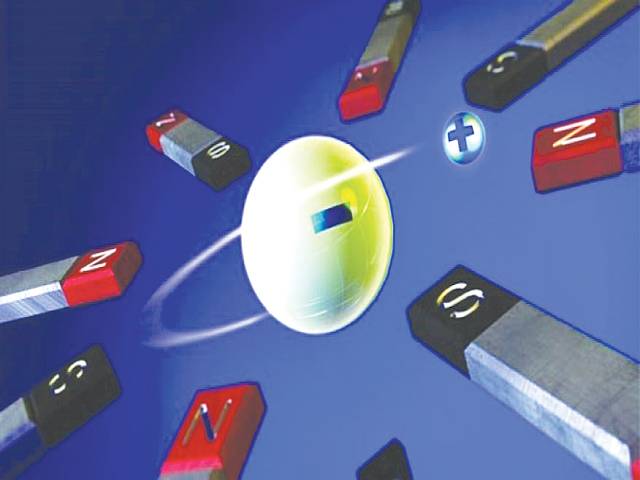CALIFORNIA-In traditional computers, the smallest units of information exists in one of two states: 1 and 0, or on and off. Long strings of 1s and 0s can store increasingly complex information that can be used use to perform useful tasks, but that information storage is limited by the size of those individual bits of information in a computer’s hard drive.
But now, researchers have figured out a way to magnetically store information on the smallest unit possible: a single atom.
There’s a long way to go before atom-sized information storage technology can make it to your home computer or smartphone, but now researchers have proven that it is possible to store information on an incredibly small level. Theoretically, this new technology could lead to massive data storage capacities on an impressive scale – even in the smallest of devices.
“Magnetic bits lie at the heart of hard-disk drives, tape and next-generation magnetic memory,” said Christopher Lutz, lead nanoscience researcher at IBM Research – Almaden in San Jose, California, in an IBM statement. “We conducted this research to understand what happens when you shrink technology down to the most fundamental extreme — the atomic scale.”
On most computers, single bits of information are already stored in very small areas, about 100,000 atoms for every 1 or 0. While this scale might been considered science fiction even a couple of decades ago, the scale at which computers store information has been steadily decreasing for years. Theoretically, as long as there is a smaller stable, physical unit upon which information can be stored, computers can become faster and be able to store more information while taking up less space.
Scientists have long thought that the atom is the smallest unit upon which this traditional computing is possible without having to resort to quantum computing or other theoretical computational methods. But despite knowing about this limit, atom-scale information storage had never been successfully attempted until now.
“It’s a landmark achievement,” says Sander Otte, a physicist at Delft University of Technology in the Netherlands who was not involved in the study, said in a statement. “Finally, magnetic stability has been demonstrated undeniably in a single atom.”
The researchers described their methods in a study released in the journal Nature. Using individual atoms of the rare Earth element holmium, they were able to flip the atoms up and down using their magnetic poles by sending electrical currents through the particles, holding them in place at an extremely low temperature assisted by liquid helium. The researchers could then “read” the magnetic field using a single iron atom and an electron microscope to determine whether the north or the south pole of each atom was facing upward. By interpreting one pole facing up as 1 and the other as 0, researchers proved that encoding binary data at this level was possible.
Of course, the radically low temperatures and specialized equipment involved in both encoding and reading this data means that it will be a long time, if ever, that consumer products will be able to read atom-sized bits of information. But one day, atom-sized storage could theoretically store the equivalent of iTunes’ entire library – 35 million songs – on a device the size of a credit card, according to IBM.
“This work is not product development, but rather it is basic research intended to develop tools and understanding of what happens as we miniaturize devices down toward the ultimate limit of individual atom,” Dr. Lutz told CNet. “We are starting at individual atoms, and building up from there to invent new information technologies.”






